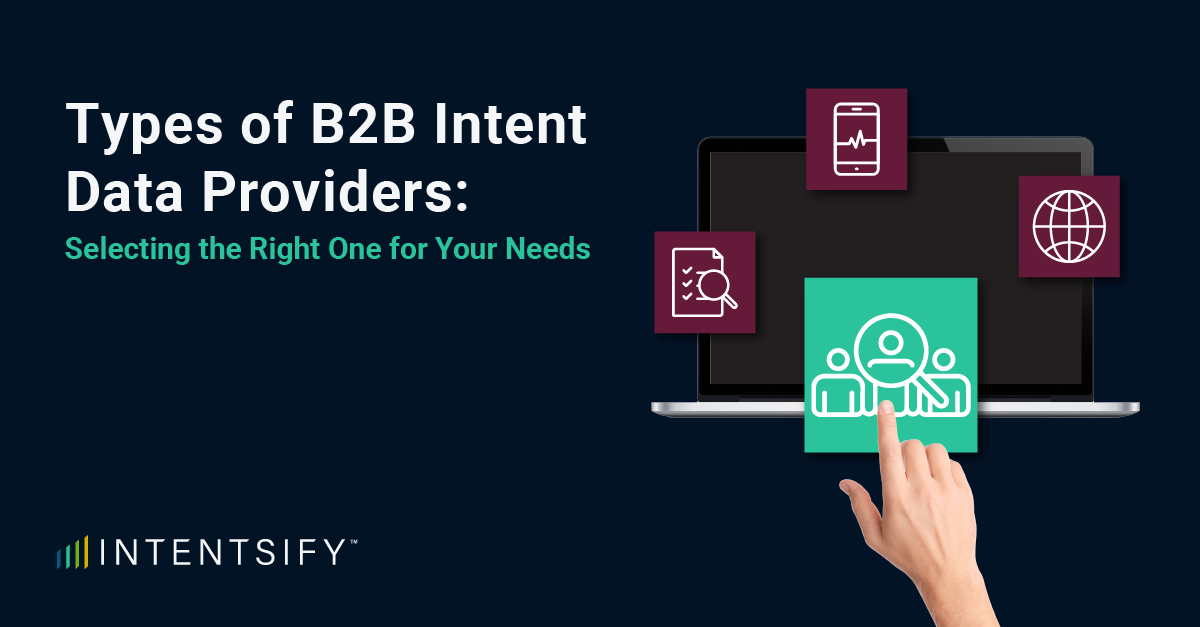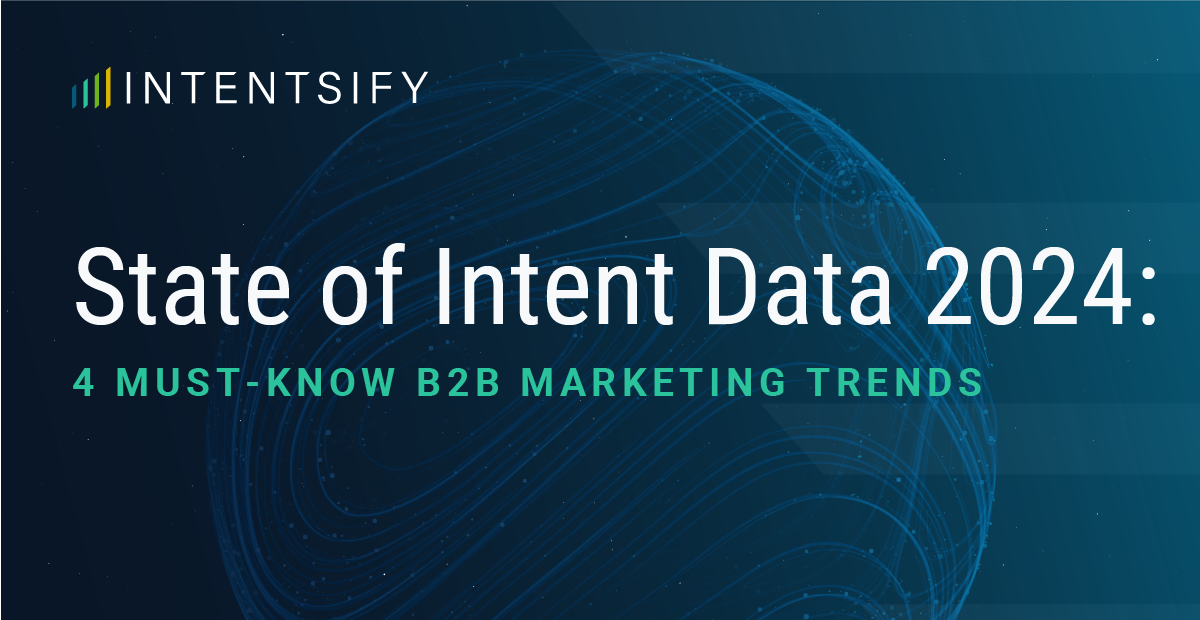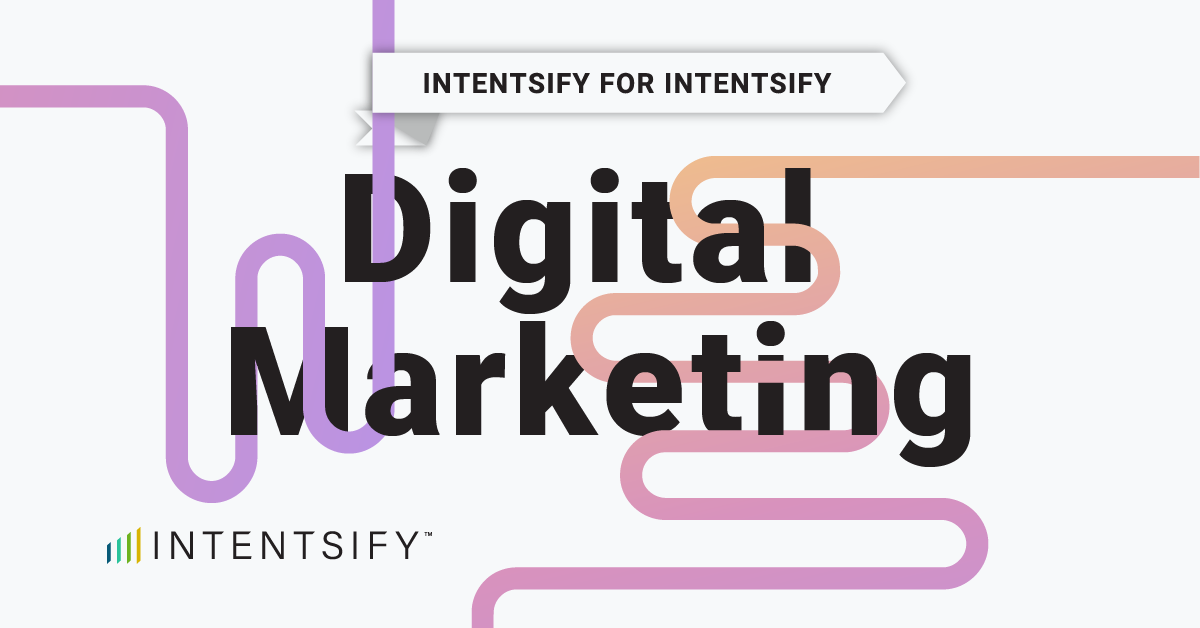Using B2B intent data for tracking buyer behaviors is now standard, driven by the growth of data providers. However, beneath the rise in adoption lies a crucial caveat: not all intent data is created equal. Every third-party intent data provider specializes in their own set of intent signals, each with their own unique strengths and limitations. Whether you’ve invested in intent data or are researching vendors, understand provider differences. This ensures you make the right investments for your specific business needs.
In this blog post, we will also walk through the pros and cons of each type of provider, along with other considerations to keep in mind when deciding which vendor to partner with. This knowledge helps determine the best fit for your business and drives stronger intent data outcomes.
Types of Third-Party Intent Data Providers
While there are multiple ways to categorize intent data providers, in this blog post I will be referencing the types of intent data providers that Forrester Research used to classify the vendors evaluated in The Forrester Wave™: B2B Intent Data Providers, Q2 2023. Forrester Research’s published definitions for each intent data provider are as follows:
1. Traditional Data Providers
Traditional data providers focus on capturing third-party signals as a standalone product, pricing their offering on the volume of data consumed.
2. ABM (Account-Based Marketing) Platform Providers
Account-based marketing (ABM) platforms produce third-party signals as a differentiator for their built-in analytics and activation capabilities, including data access as part of the software platform subscription.
3. Campaign Execution Firms
Campaign execution firms generate a mix of third- and second-party signals in support of marketing services, rolling the cost of the data into related activation fees or pricing on a cost-per-lead basis.
4. Walled Gardens
Finally, walled gardens collect second-party signals for specific industries directly from user activity on their owned properties, such as review sites and user communities, while pricing similarly to traditional data providers.
The Pros and Cons of Each Type of Provider
Examining the potential strengths and weaknesses of each intent data provider will help you gain a deeper understanding of each business model and decide which one best aligns with your company’s current needs, resources, and goals. These slight differences can make or break the success of your go-to-market strategies, so these are important to note.
Traditional Data Providers
- Pros: Offers a higher volume and variety of signals. Great for organizations with an analytics team that can focus on analyzing and actioning the data.
- Cons: No additional marketing/activation support.
ABM (Account Based Marketing) Platform Providers
- Pros: Provides built-in analytics and a large breadth of activation tools.
- Cons: Often requires an expensive platform fee and a lengthy implementation and onboarding process.
Campaign Execution Firms
- Pros: Delivers full-service demand generation, which is especially useful for teams with limited bandwidth. Data cost is included in service fees.
- Cons: Does not offer predictive analytics and may have a smaller partner ecosystem.
Walled Gardens
- Pros: Intent signals are exclusive to the provider’s owned web properties.
- Cons: Because intent signals are limited to specific industries and are unique to the provider’s network, signal volume is often low.
Key Considerations and Best Practices
There are many things to evaluate when deciding which intent data provider is right for your organization. While understanding the differences between the types of providers is crucial, it is also important to keep a few other things in mind when making your decision.
1. Look for a primary provider that leverages multiple sources of intent data and methodologies.
Knowing which data source(s) each vendor leverages and the methods they use to collect the data–along with the pros and cons of each one–will help you determine which provider has the right variety of intent signals to support your use cases and business needs. To put it simply, the more sources and methods being combined, the more accurate your intent signals will be. Learn more.
2. Have the right processes and resources in place to support your intent-driven programs.
Will your leads automatically be routed to the appropriate channels for lead nurture or follow-up? Are there team members responsible for managing your intent data and ensuring its success? Can you accurately measure the outcomes from your intent-driven programs? Ultimately, these are questions you should have answers to prior to implementation.
3. Remember that intent data does not replace sales qualification.
Intent signals can be strong indicators that a company is interested in purchasing a solution like yours, but it does not guarantee a purchase will happen. However, it is important not to treat your intent-derived leads as sales-qualified without considering other information, such as ICP profile-fit and first-party, CRM, or technographic data. Doing so can negatively impact your revenue predictions and sales win rates.
We hope this quick guide arms you with the knowledge needed to successfully navigate the intent data provider landscape and find the solution that works best for your organization. For more information regarding intent data providers, be sure to check out The Forrester Wave™: B2B Intent Data Providers, Q2 2023.






